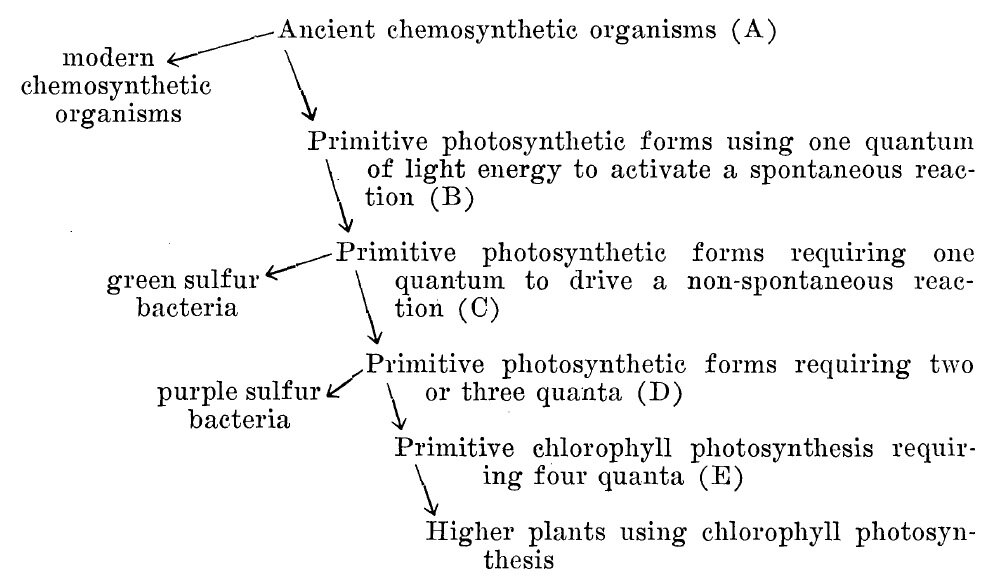Mini-lens technology is revolutionizing the way we think about optics and consumer electronics. Developed by Rob Devlin during his doctoral research at Harvard, this innovation utilizes metasurfaces—thin layers of tiny pillars—to manipulate light with unprecedented efficiency. Unlike traditional lenses that are bulky and costly, mini-lenses promise a smaller, more affordable alternative that can be mass-produced using semiconductor manufacturing techniques. As the industry embraces these optics innovations, companies are beginning to incorporate mini-lens technology into their devices, enhancing functionality while reducing size. With key players like Metalenz leading the charge, the integration of polarization metasurfaces into everyday technology is not just a possibility but a reality shaping our digital future.
The emergence of compact lens systems, often referred to as micro-lens or metasurface optics, is set to transform the landscape of optical devices. These advanced designs, driven by the scientific principles established at institutions like Harvard, offer a glimpse into the future of imaging technology. The miniaturization of optical components enables the development of more sophisticated applications, such as enhanced 3D sensing and improved facial recognition capabilities in consumer gadgets. As innovators harness the power of these groundbreaking optics innovations, the widespread adoption of such technologies by leading companies signifies a new era for electronics. This shift not only addresses the growing demand for slimmed-down devices but also opens doors for entirely new functionalities that leverage the unique characteristics of polarization metasurfaces.
The Rise of Mini-Lens Technology in Consumer Electronics
The groundbreaking development of mini-lens technology has revolutionized the consumer electronics landscape, paving the way for more compact and efficient devices. Companies like Metalenz, founded by Rob Devlin, are at the forefront of this innovation, packaging millions of tiny lenses into everyday electronics. These mini-lenses utilize advanced light manipulation techniques derived from the principles of metasurfaces, allowing manufacturers to produce lighter, thinner, and more cost-effective optical systems. As consumer demand for sleek smartphones and tablets grows, the pivotal role of mini lenses becomes increasingly apparent, making them essential components in modern design.
By enabling manufacturers to integrate sophisticated optics into their products without adding bulk, mini-lens technology is reshaping the consumer electronics market. Devices that once relied on large glass lenses can now leverage high-performance metasurfaces, simplifying assembly while enhancing capabilities. These advancements have significant implications, from improving camera quality to advancing augmented reality and 3D sensing applications. As Metalenz continues to push the boundaries of what’s possible with mini-lens technology, the impact on the consumer electronics industry is likely to be profound, ushering in new eras of innovation.
Metasurfaces: A Breakthrough in Optics Innovation
Metasurfaces represent a cutting-edge breakthrough in optics innovation, allowing for unprecedented control over light at the nanoscale. Developed through years of meticulous research, such as that led by Federico Capasso at Harvard, metasurfaces are flat optical devices that manipulate light more effectively than traditional lenses. By employing nano-engineered structures, these surfaces can redirect, focus, and filter light in ways that were previously unimaginable. This revolutionary technology underpins the performance of various devices, ranging from smartphones to complex imaging systems, offering new possibilities in visual performance and functionality.
The significance of metasurfaces extends beyond mere performance enhancements; they are redefining the foundations of optical manufacturing. Instead of traditional curved glass lenses, which often face limitations in integration and production, metasurfaces can be seamlessly incorporated into existing semiconductor fabrication processes. This shift not only streamlines production but also drives down costs, making advanced optics accessible to a broader range of products. As industry leaders like Rob Devlin and his team at Metalenz continue to innovate, the potential of metasurfaces to create entirely new optical applications is just beginning to be realized.
The Role of Metalenz in Shaping Future Technologies
Metalenz has emerged as a leader in the optics innovation landscape, driven by the vision of its founder, Rob Devlin. Since its inception, the company has focused on scaling the production of mini-lenses based on metasurface technology, with a commitment to redefining how we interact with electronic devices. By leveraging advanced fabrication techniques and integrating unique optical properties of metasurfaces, Metalenz has successfully introduced products that enhance functionality while significantly reducing size and cost. Their achievements underscore the importance of university-affiliated startups in bringing cutting-edge research to market.
With partnerships in place across various sectors, including major players in consumer electronics, Metalenz is poised to influence the future of technology significantly. The integration of metasurfaces into devices allows for enhanced features, such as improved photography capabilities in smartphones and new interactions in augmented reality applications. As competition in the optics field intensifies, the adaptability and innovative spirit of Metalenz positions it as a key player. By continuing to collaborate with academic institutions and pushing the envelope of what’s possible, they are not just creating products but redefining entire industries.
Polarization Metasurfaces: Enhancing Security and Functionality
Polarization metasurfaces represent a remarkable extension of the capabilities offered by traditional metasurface technology, specifically designed to harness the unique properties of light. This innovation introduces new functionalities that can significantly enhance the security and performance of electronic devices. For example, Rob Devlin and Metalenz are developing a revolutionary Polar ID system that uses the polarization of light to offer a novel layer of security for smartphones, effectively differentiating between authentic users and potential impersonators. By utilizing these new optical insights, polarization metasurfaces could transform user authentication methods.
Moreover, the broader implications of polarization metasurfaces extend to various fields beyond consumer electronics. In medical applications, these metasurfaces can differentiate healthy tissue from harmful growths, such as skin cancer, based on their distinct polarization signatures. Additionally, their integration also shows promise in environmental monitoring, where changes in polarization can indicate air quality variations. As technology evolves, polarization metasurfaces stand to play a critical role in the future development of smart, secure devices that not only protect users but also enhance overall functionality.
Advancements in 3D Sensing Technology with Metasurfaces
Metasurfaces are at the forefront of advancements in 3D sensing technology, which is crucial for applications ranging from facial recognition to augmented reality. By leveraging the unique properties of light manipulation through mini-lenses, Metalenz has developed innovative technologies that facilitate superior depth perception capabilities. For instance, their collaboration with STMicroelectronics exemplifies how metasurfaces are integrated into advanced modules that measure distances using near-infrared light, enabling a new generation of 3D sensing solutions. This integration significantly enhances the capabilities of devices in various sectors, from entertainment to secure payment systems.
The efficient use of metasurfaces in 3D sensing enhances the accuracy and responsiveness of devices, marking a significant leap in user experience. As the demand for biometric security solutions continues to rise, technologies utilizing these sophisticated optical systems can deliver faster, more reliable recognition processes. As applications expand, the potential for metasurfaces to redefine traditional industries grows, allowing for advancements in machine learning and AI integration. With ongoing research and development, the future of 3D sensing technology appears promising, opening doors for innovations that will shape and improve daily interactions with technology.
The Transition from Research to Market: Metalenz’s Impact
The transition from academic research to market applicability is a significant journey that many groundbreaking technologies face. Metalenz exemplifies this transition remarkably, transforming theoretical concepts into commercially viable products. Beginning with essential research conducted in the labs of institutions like Harvard, the company has harnessed the innovations of pioneers such as Federico Capasso and Rob Devlin to develop practical solutions in optics. This seamless pathway from research to implementation underscores the critical role that academic partnerships play in driving technological advances.
By rapidly moving concepts such as mini-lens technology into manufacturing, Metalenz showcases how effective collaboration between academia and industry can create new markets. The company has not only achieved success in its product offerings but also set a precedent for how university-backed startups can bring revolutionary ideas to fruition. This process of transformation is essential for fostering innovation in technology, ensuring that cutting-edge research contributes to real-world applications that enhance consumer experiences.
Challenges Faced by Innovations in Metalens Technology
Despite the rapid advancements in metalens technology, the journey towards widespread adoption is not without its challenges. One significant hurdle is the need for continuous innovation within a highly competitive market. Companies like Metalenz are under constant pressure to stay ahead of competitors who are eager to leverage similar technologies. This ensures that R&D investments remain high, as the costs associated with developing and refining metalens systems can be substantial. The expectation for ongoing improvement requires a strategic focus on enhancing both product performance and manufacturing processes.
Additionally, the integration of metalenses into existing manufacturing frameworks poses technical challenges. While the scalability promises to lower costs and streamline production, variations in material quality, production consistency, and device design can impact the overall efficacy of metasurfaces. As manufacturers adapt to a landscape dominated by these innovative products, ensuring quality control will be paramount. Addressing these challenges head-on will be crucial for Metalenz and similar companies aiming to solidify their positions in the evolving optics market.
The Future of University Research and Industry Collaboration
The collaboration between university research institutions and the industry has never been more pivotal to driving technological advancements. The success story of Metalenz, emerging from Harvard’s vibrant research community, illustrates how academic environments can foster innovation that transitions effectively into the marketplace. As organizations recognize the potential of academic spin-offs, the trend towards collaboration is likely to grow, leading to the development of groundbreaking applications in various fields, from consumer electronics to health technologies. This collaboration lays the groundwork for sustainable innovations that can evolve with consumer needs.
Moreover, the synergy generated through university partnerships can lead to the exploration of new areas of research, as multidisciplinary teams come together to tackle complex problems. This approach not only accelerates product development but also brings diverse perspectives that enrich the innovation process. As we move forward, the relationship between academia and industry will be vital for nurturing environments where creativity flourishes and market-ready solutions arise, ultimately benefiting consumers and enhancing technological capabilities.
The Environmental and Economic Impact of Metalens Technology
The environmental and economic implications of adopting metalens technology are noteworthy, especially as the push for sustainable practices intensifies across industries. By enabling smaller, more efficient optical systems, metalenses contribute to reduced material usage, lower energy consumption, and less electronic waste over the product lifecycle. As consumer electronics become more compact, the optimization of design through innovative lens technology serves both ecological and economic goals. Metalenz’s drive towards mass production reflects an understanding of global market demands for environmentally responsible solutions.
Economically, the widespread adoption of metasurfaces could lead to significant cost savings for manufacturers and consumers alike. By simplifying the optical designs required in devices and reducing the need for traditional large lenses, manufacturers can achieve lower production costs while delivering enhanced functionalities. These savings can be transferred to consumers, driving further growth in the consumer electronics sector. As awareness of sustainability and its importance in product development grows, the metalens technology spearheaded by companies like Metalenz sets a benchmark for how technological advancements can intersect with responsible practices.
Frequently Asked Questions
What is mini-lens technology and how does it relate to metamersurfacing?
Mini-lens technology involves the use of tiny lens arrays or surfaces, known as metasurfaces, which manipulate light in innovative ways. This technology allows for the creation of compact optical devices that can focus light with precision, similar to traditional lenses, but at a significantly reduced size and cost. Developed by researchers like Rob Devlin at Metalenz, mini-lenses leverage principles of optics innovation to enhance consumer electronics.
How has mini-lens technology impacted consumer electronics?
Mini-lens technology has profoundly impacted consumer electronics by enabling the development of lighter, slimmer devices while maintaining high optical performance. With millions of metasurfaces produced by companies such as Metalenz, devices like smartphones and tablets can now incorporate advanced features like 3D sensing and improved camera systems without the bulkiness of traditional lenses. This innovation facilitates better design and functionality across various products.
What are polarization metasurfaces and their advantages in mini-lens technology?
Polarization metasurfaces are a specific type of mini-lens technology that utilizes the polarization of light to improve imaging and sensing capabilities. These surfaces are crucial for applications such as facial recognition and augmented reality, providing additional security and depth information. Compared to conventional polarization cameras, Metalenz’s polarization metasurfaces are significantly smaller and more cost-effective, expanding their potential use in everyday consumer electronics.
How did Rob Devlin contribute to the development of mini-lens technology?
Rob Devlin played a pivotal role in the development of mini-lens technology during his Ph.D. at Harvard, where he worked on refining the design and materials of metasurfaces. As a result, he co-founded Metalenz, a startup that commercializes this innovative technology, allowing it to transition from research to mass production. Devlin’s leadership has been instrumental in harnessing the potential of mini-lenses for practical applications in various consumer electronics.
What is the future of mini-lens technology in consumer devices?
The future of mini-lens technology in consumer devices is promising, with ongoing advancements aimed at reducing size and cost while enhancing functionality. Companies like Metalenz are focused on developing new applications for metasurfaces, such as their upcoming Polar ID system that provides unique security features for smartphones. As the technology matures, we’ll likely see even more innovative uses across different sectors, including healthcare and environmental monitoring.
| Key Aspect | Details |
|---|---|
| Innovation | Rob Devlin developed a mini-lens at Harvard that manipulates light like traditional lenses but is more compact and mass-producible. |
| Company Formation | Metalenz was founded in 2016 to commercialize the mini-lens technology developed in Federico Capasso’s lab. |
| Production Scale | Metalenz has produced around 100 million metasurfaces used in consumer electronics. |
| Market Impact | The technology is integrated into devices like the iPad, Samsung Galaxy S23 Ultra, and Google Pixel 8 Pro, showing significant market impact. |
| Technological Advantage | Mini-lenses are smaller, cheaper, and easier to produce than traditional lenses, allowing for improved designs in technology. |
| Future Developments | Metalenz is working on Polar ID technology, which offers a low-cost, compact solution for unique facial recognition. |
| Broader Applications | Potential applications extend beyond consumer electronics to areas like medical diagnostics and environmental monitoring. |
Summary
Mini-lens technology is revolutionizing the optics industry by providing a compact and cost-effective alternative to traditional lenses. Developed by Rob Devlin during his time at Harvard, these innovative lenses have transitioned from lab prototypes to mass-produced components integrated into popular consumer electronics. The rapid success and adoption of mini-lens technology highlight the potential for university research to transform industries and underscore the rapid advancements being made in optical technologies. As Metalenz continues to innovate with future applications like Polar ID, the impact of mini-lens technology will only grow, enabling new functionalities in various fields.



